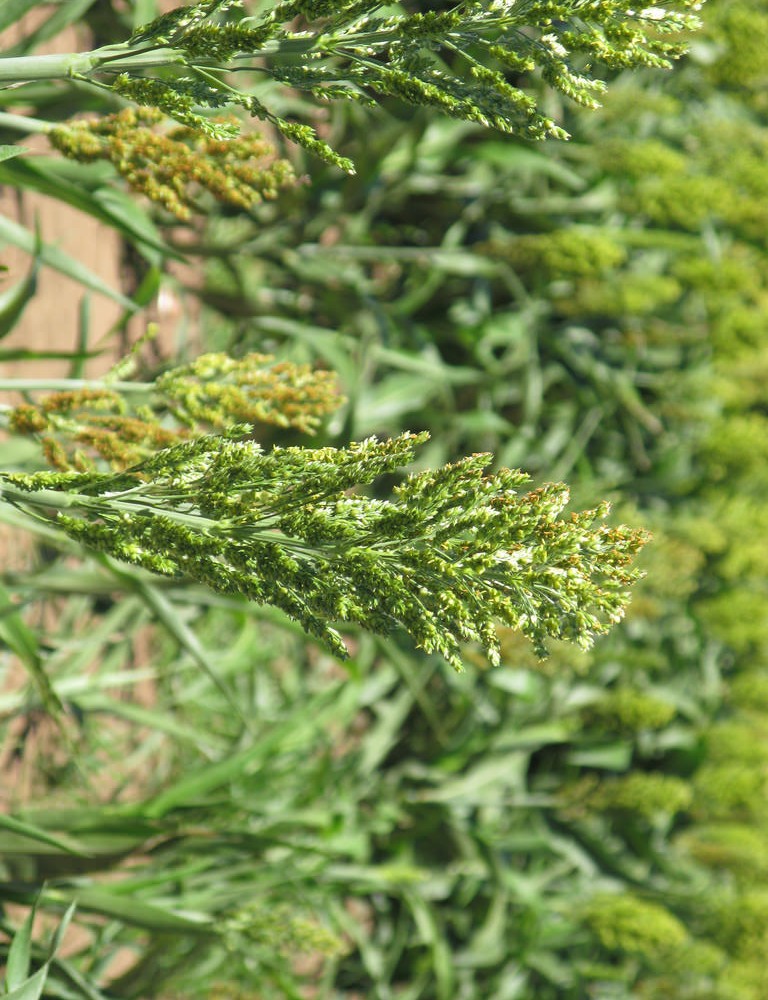Great millet
(Hyparrhenia dichroa)

Description
Sorghum bicolor, commonly called sorghum and also known as great millet, broomcorn, guinea corn, durra, imphee, jowar, or milo, is a grass species cultivated for its grain, which is used for food for humans, animal feed, and ethanol production. Sorghum originated in Africa, and is now cultivated widely in tropical and subtropical regions. Sorghum is the world's fifth-most important cereal crop after rice, wheat, maize, and barley, with 59.34 million metric tons of annual global production in 2018. S. bicolor is typically an annual, but some cultivars are perennial. It grows in clumps that may reach over 4 m high. The grain is small, ranging from 2 to 4 mm in diameter. Sweet sorghums are sorghum cultivars that are primarily grown for forage, syrup production, and ethanol; they are taller than those grown for grain. Sorghum bicolor is the cultivated species of sorghum; its wild relatives make up the botanical genus Sorghum. The leading producers of S. bicolor in 2011 were Nigeria (12.6%), India (11.2%), Mexico (11.2%), and the United States (10.0%). Sorghum grows in a wide range of temperatures, high altitudes, and toxic soils, and can recover growth after some drought. It has five features that make it one of the most drought-resistant crops: It has a very large root-to-leaf surface area ratio. In times of drought, it rolls its leaves to lessen water loss by transpiration. If drought continues, it goes into dormancy rather than dying. Its leaves are protected by a waxy cuticle. It uses C4 carbon fixation thus using only a third of the amount of water that C3 plants require. Sorghum grain cannot be consumed unless the indigestible husk is removed. During the transatlantic slave trade, "the only way to remove the husk was by hand, with mortar and pestle." Enslaved women did most of the work in preparing the sorghum and were tasked with cleaning the grain and turning it into flour. Sorghum is cultivated in many parts of the world today. The grain finds use as human food, and for making liquor, animal feed, or bio-based ethanol. Sorghum grain is gluten free, high in resistant starch, and more abundant and diverse phenolic compounds compared to other major cereal crops.
Taxonomic tree:







